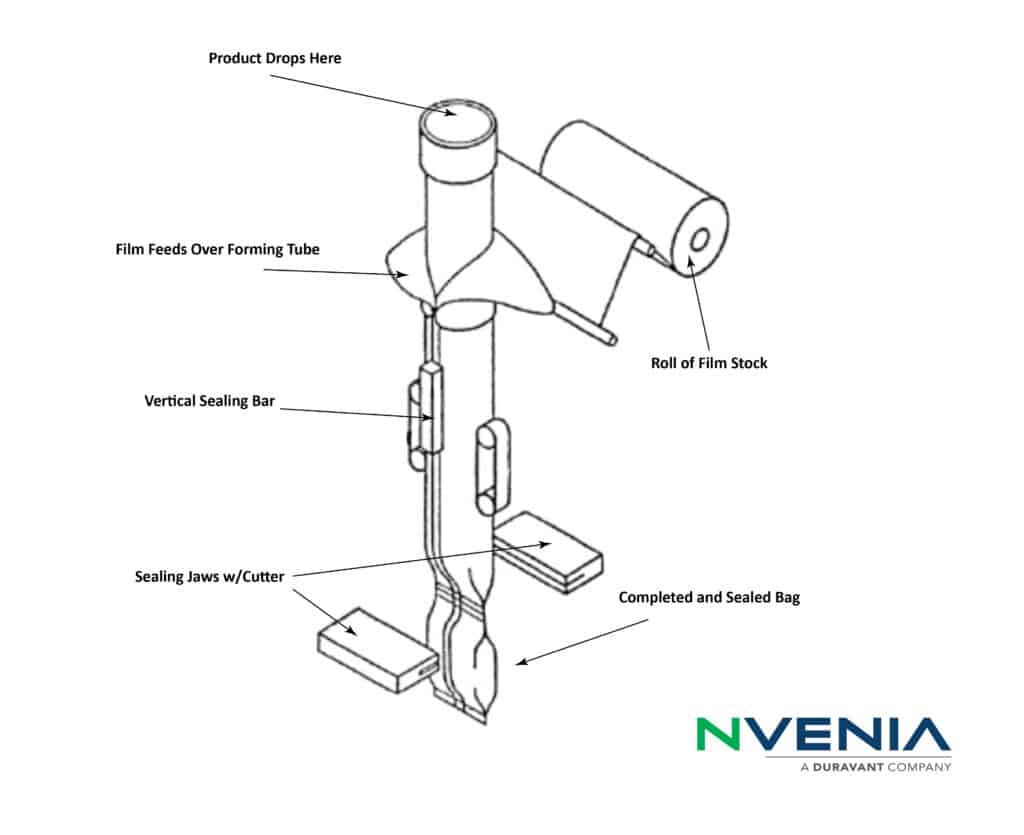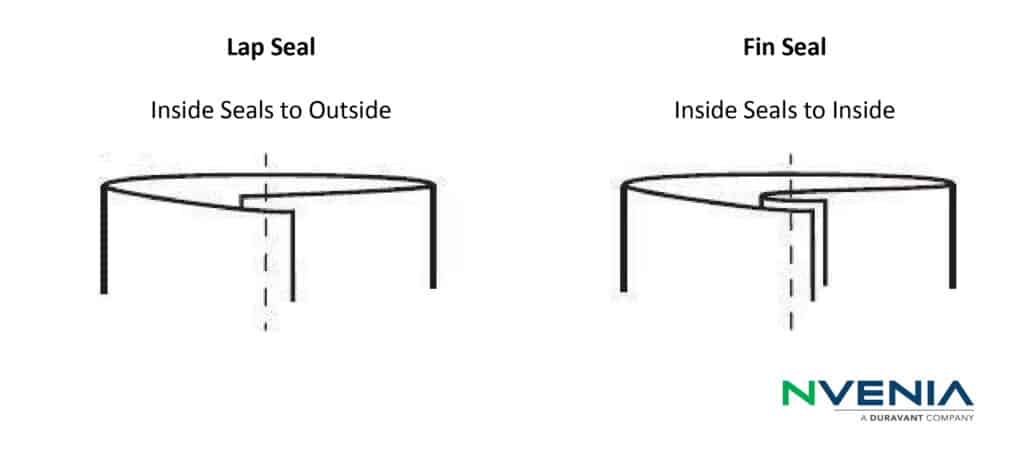The Duravant family of operating companies serve the food processing, packaging and material handling segments.
Behind the Machine: A Step-by-Step Guide to How a Vertical Form Fill & Seal Machine Works
08/24/2023
nVenia’s OHLSON Brand Vertical Form Fill & Seal bagging systems are often utilized in the food packaging industry, as these machines deliver perfect pillow bags every time for food and other applications.
Just as the name (Vertical Form Fill & Seal) suggests, this machine starts by helping to form the bag from roll stock. The bag is then filled with product using an OHLSON Brand Multi-Head Weigher and sealed in preparation for shipment.
OHLSON Brand VFFS bagging machines can be configured in a multitude of ways and are available in a variety of sizes with different features to fit any packaging line. While the most common examples of VFFS bags might be potato chip bags, these highly efficient and high-speed machines can be used with a variety of dry goods such as candy, nuts, snacks, and pet food, all in a variety of settings.
Vertical Form Fill & Seal machines can run at very high speeds – nVenia's OHLSON Brand offers system speeds of up to 100 bags per minute. With the machine forming the bags directly from roll stock, each package costs significantly less than those utilizing pre-made pouches.
Here’s a quick look at the basic functions of the VFFS machine.

The VFFS machine uses a cone-shaped forming tube to feed and shape the film into the appropriate bag size. The forming tube is responsible for sealing both the bottom and the vertical seam where the film edges meet.
The bag's width is determined by the design of the forming tube, while the bag's length is controlled by the bagging machine. If a different bag width is required during production, operators can easily replace the forming tube, ensuring the production process continues seamlessly.
There are two common types of seals used: the lap seal and the fin seal. In a lap seal, the two edges of the film overlap and are sealed together, with the top side's back sealing to the front of the bottom side. A fin seal brings the film edges together inside the forming tube and sealing the inner surfaces.

A lap seal, due to its design, utilizes a smaller amount of film, approximately equal to the width of the seal, for each bag. However, there are certain films that include special barrier layers, such as those for controlling odor or heat, which require the use of a fin seal to seal the bag effectively.
Films used in vertical form fill seal machines can have various additional features to help maintain the freshness of the packaged product, such as zippers or gas release valves.
Step 2: Dosing and Filling the Product
After the bag forming process is complete, the next step is filling the bag by connecting the bagging machine to a multi-head scale or other filling machine, such as a Linear Weigher or Volumetric filler. These machines are synchronized electronically, ensuring that the moment the bag is ready, the product is automatically deposited into it.
Step 3: Sealing and Finishing
Once the product has dropped into the bag, the top is sealed, and the bag is completed and cut away. The top seal on the first bag becomes the bottom of the next bag, and the process repeats.
To cater to specific requirements, the machine may also add a date/batch code, a tear notch for easy opening, or a hole punch/euro punch to allow it to hang on a wall display.
Once completed, the bags are collected and organized into cases for shipment to stores or end-users.
nVenia designs and manufactures a full range of Vertical Form Fill & Seal (VFFS) bagging machines under our OHLSON Brand, with options to accommodate nearly any type of bag requirement.
Please request a quote or give us a call to learn more!









